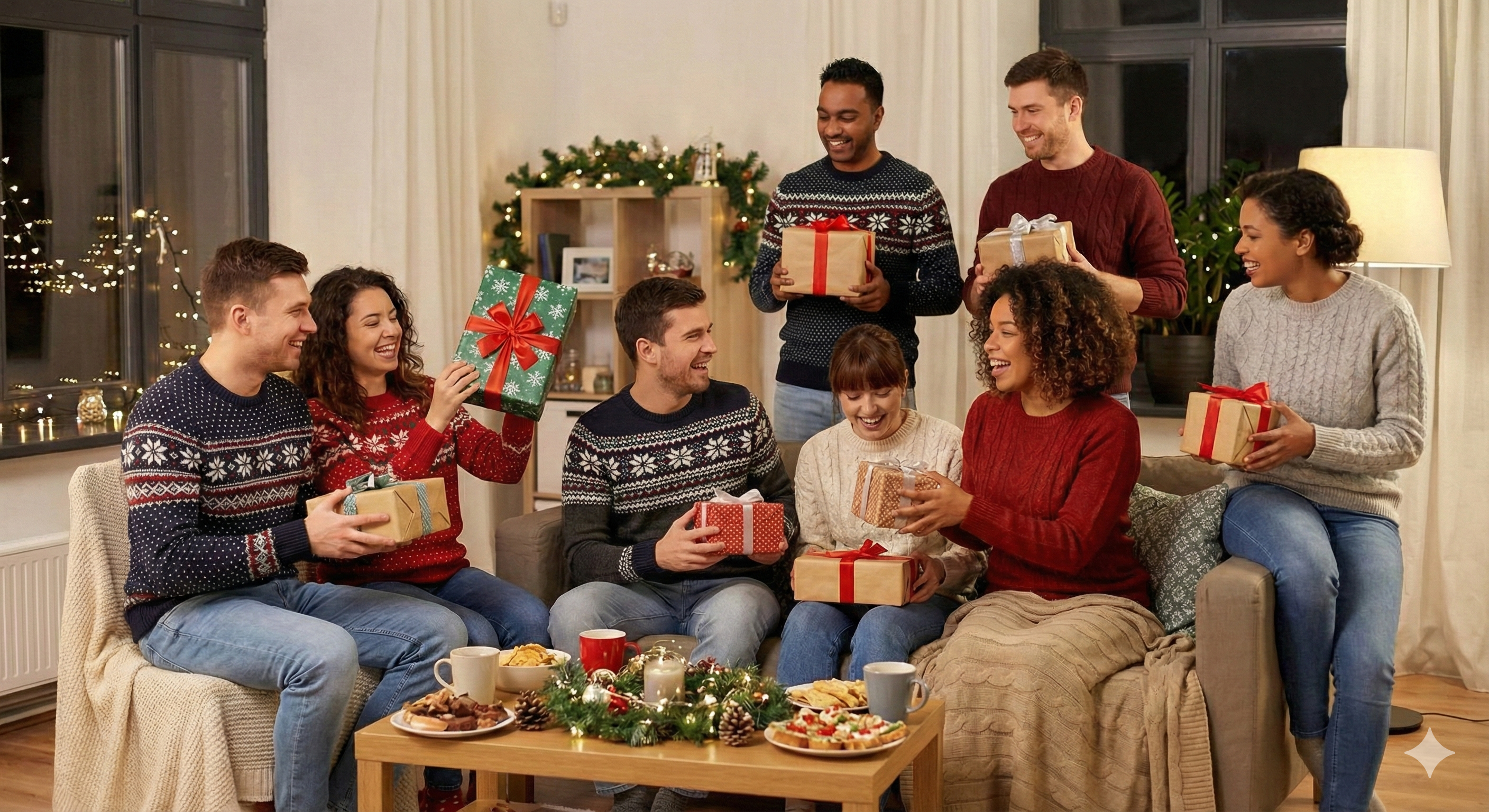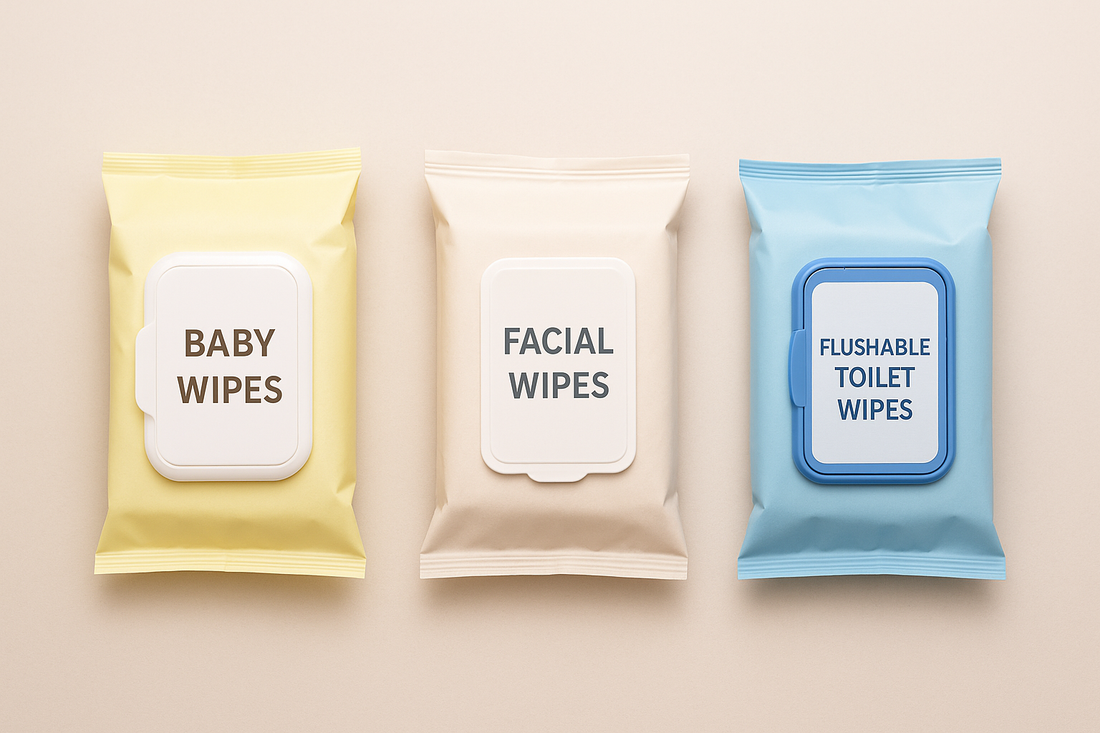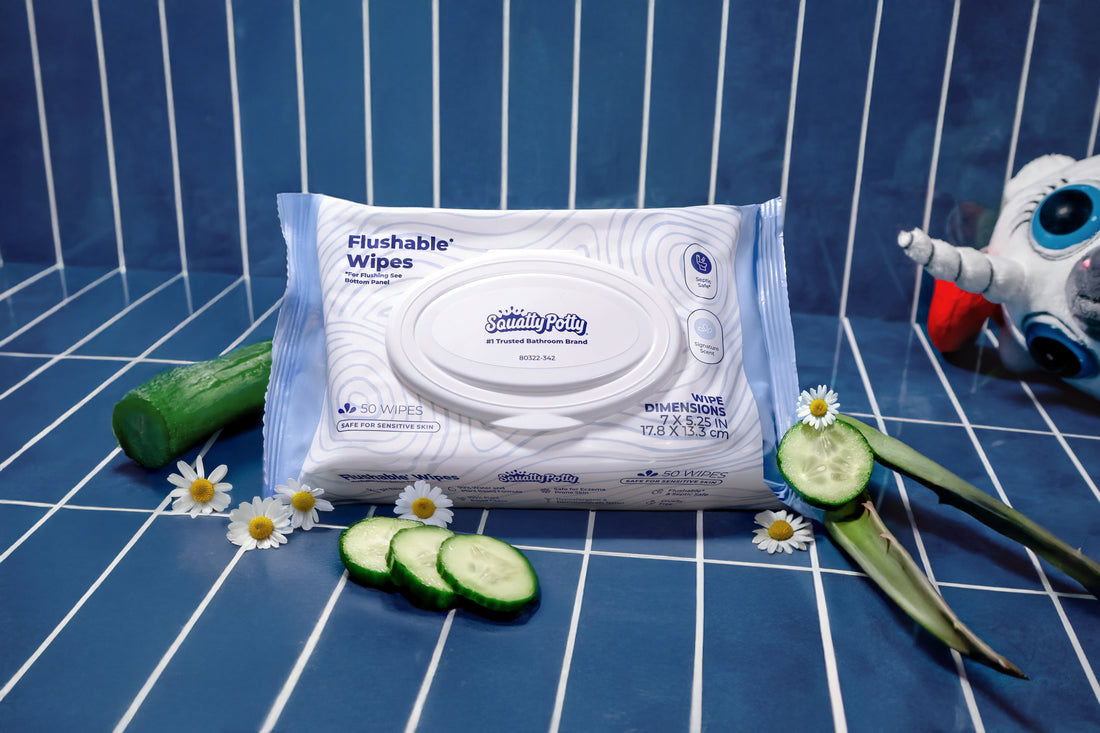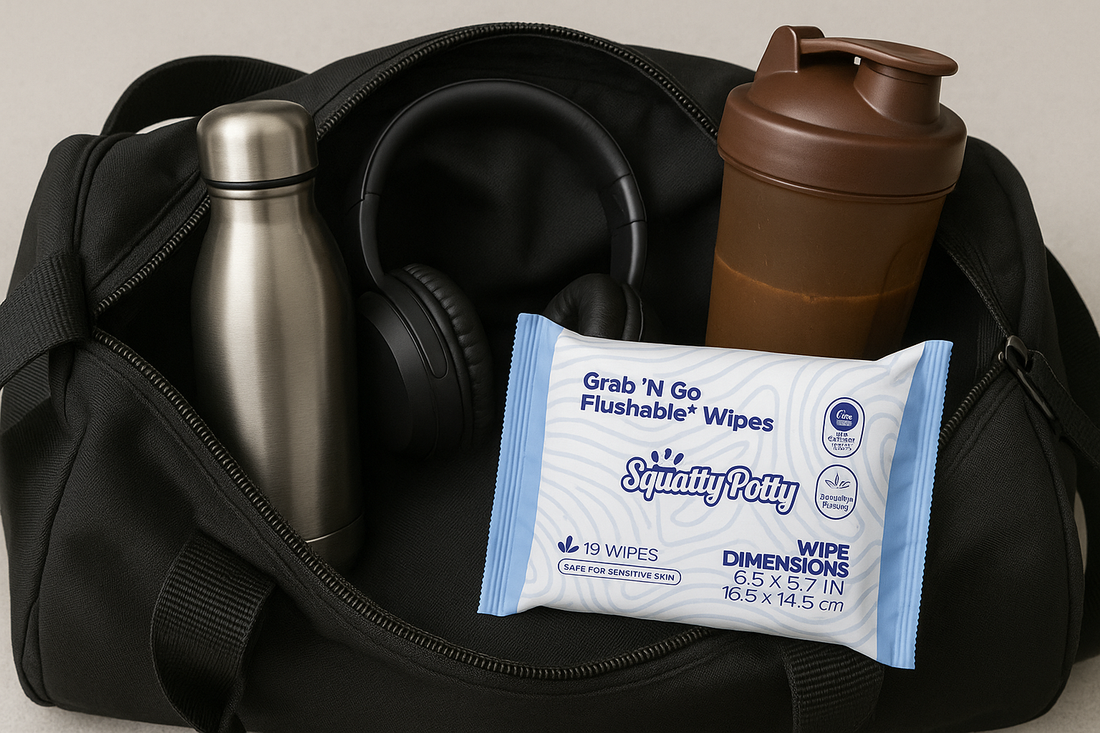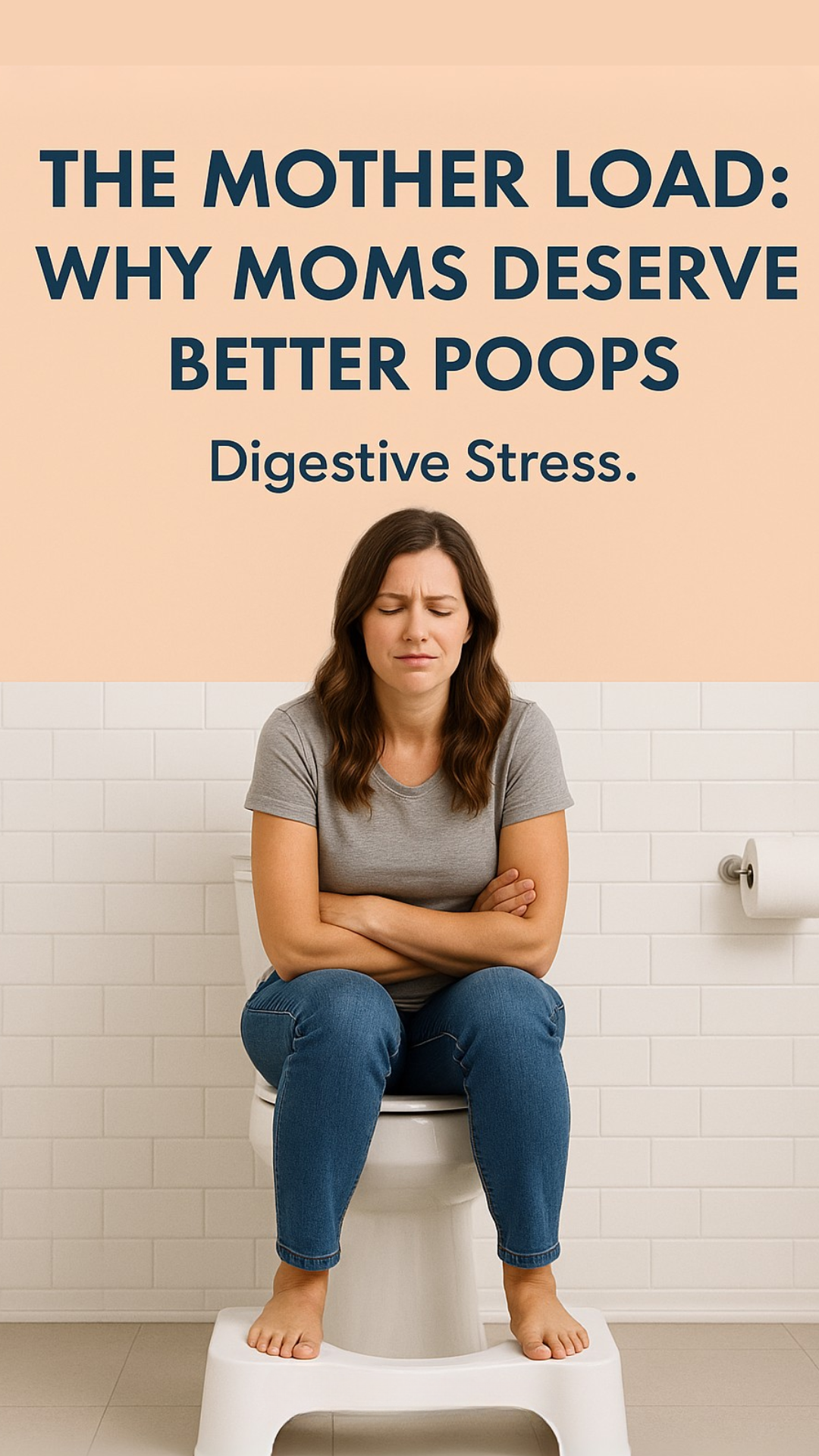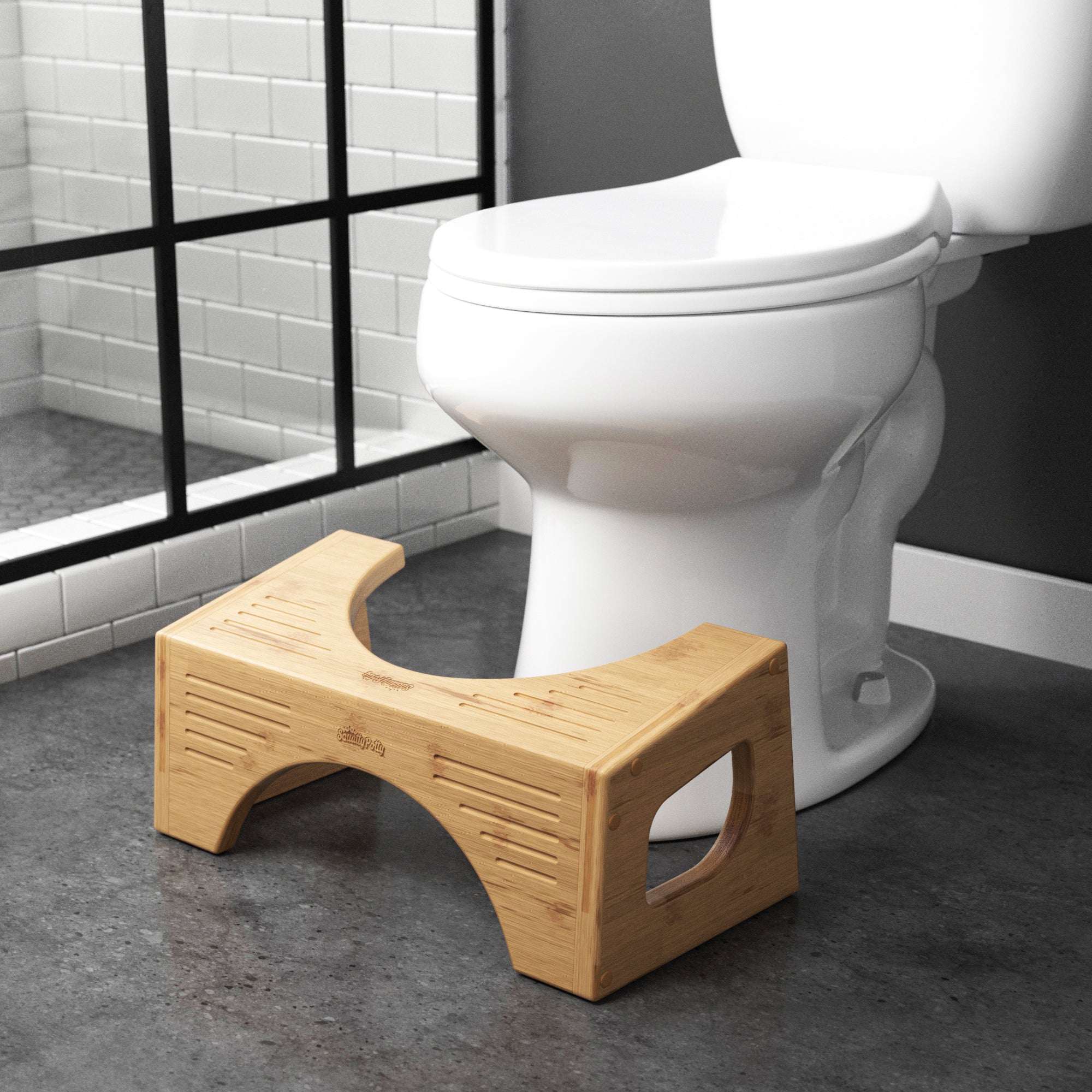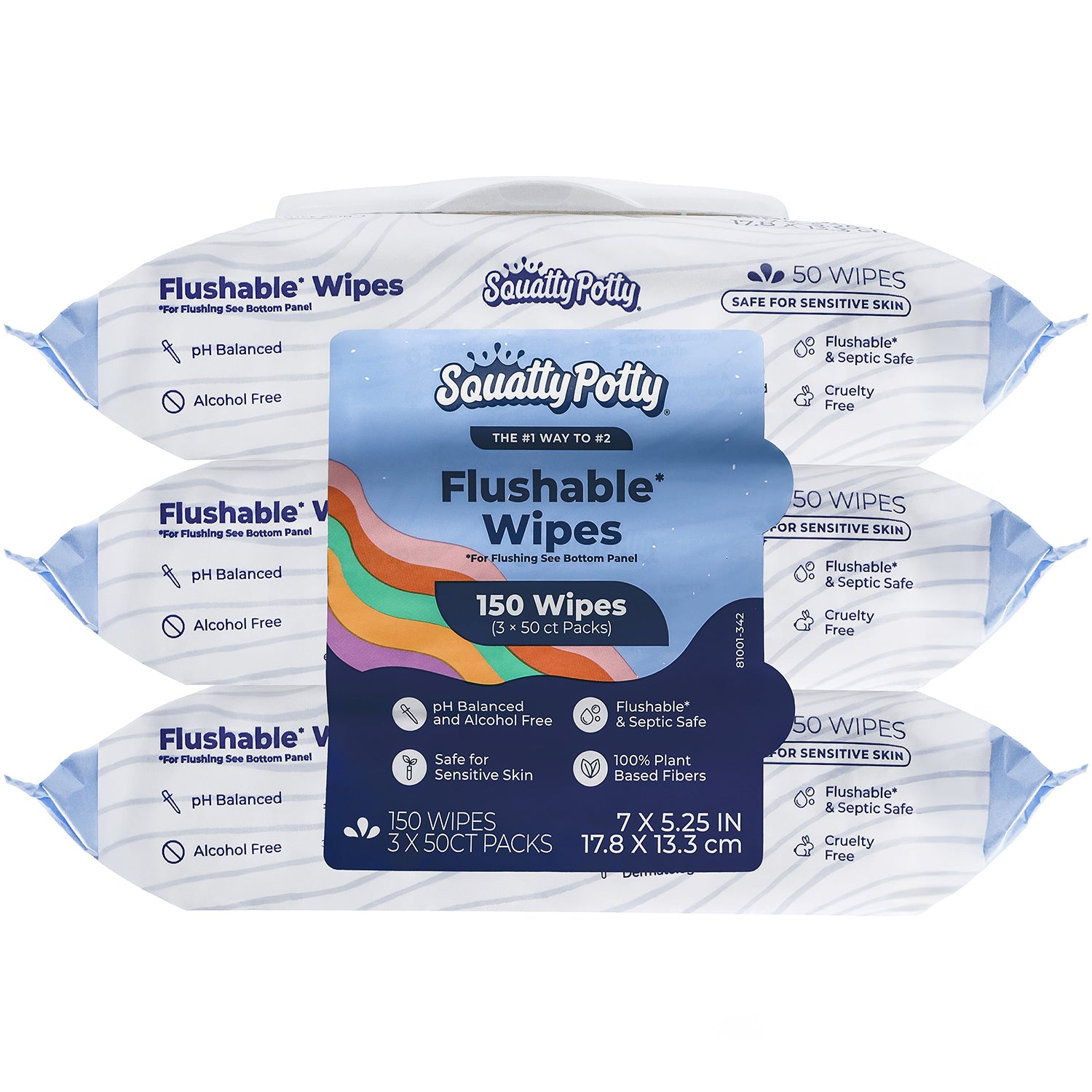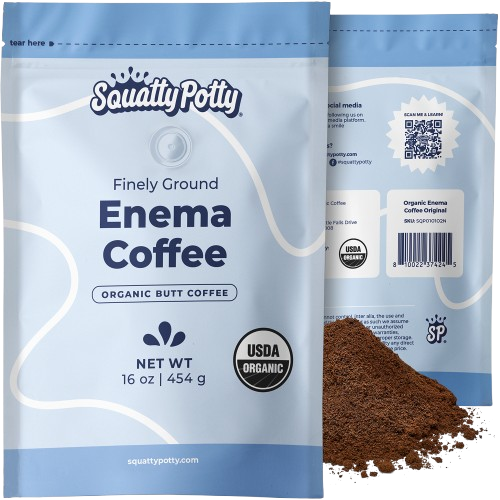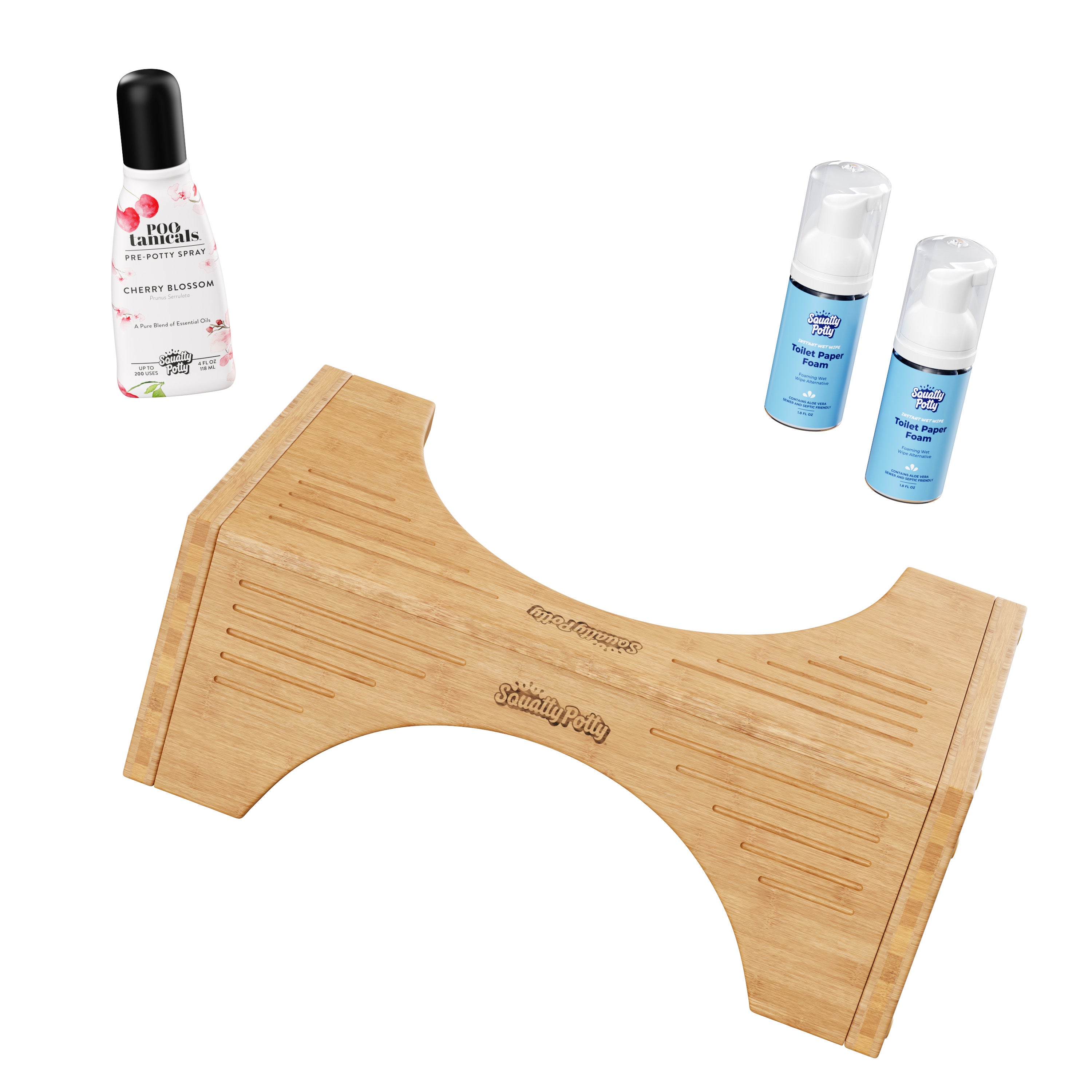Squatty Potty Blog
7 Home Remedies for Colon Cleansing
Repost from 2019: Helpful during the holidays when gut health takes a hit from the seasonal changes, stress, and heavy food. Do you regularly suffer from constipation or irregular bowel movements? You're not alone. Research suggests that 15% of Americans are victims of chronic constipation, which can be a dangerous affliction. Such digestive diseases lead to the build-up of waste on the walls of the colon. The colon performs many essential functions— not only does it aid in the elimination of stool, but it also extracts salt and water from waste, maintains pH, and fights against harmful bacteria. The malfunctioning of the colon can cause serious health implications such as skin allergies, gallbladder stones, heart diseases, etc. Luckily, there are things you can do to improve your colon health. Eating healthy foods, exercising, and using a toilet stool have been proven to help you enjoy more satisfying poops and alleviate gastrointestinal problems. Shop Squatty Potty Stools Easy and Quick Home Remedies for Constipation Many people find that performing a colon cleanse is an easy preventative to avoid colon problems in the future. Green Vegetables Leafy greens are nutrient powerhouses; spinach, kale, brussel sprouts, asparagus, collard greens, leeks, and peas are all rich in Chlorophyll which helps cleanse the intestinal tract and, as a result, soothes the colon. They also help detoxify the liver and protect the body from environmental toxins. You can boil or steam the veggies, add them in soups or sauté them with a bit of butter or olive oil. Eating green veggies and implementing a Squatty Potty into your toilet routine can lead to smoother, healthier movements. Not sure which toilet stool is right for you? Use our guide to find the stool that best suits you. Choosing The Right Squatty Potty For You Ginger Ginger has antiseptic properties and is beneficial as it stimulates digestion. It can be added to any juice or eaten directly. Add one teaspoon of ginger juice and honey, and mix it in one cup of warm water. You can consume this mixture twice a day. You can also make a smoothie using: 1 tablespoon of ginger (peeled) 1 apple (sliced) A cup of spinach 1 carrot (sliced) Blend all these ingredients with 1 cup of water, and your smoothie is ready. Drink it once a day to ensure proper functioning of the intestinal tract. Juices made by using apple and lemon Apples and lemons are rich in nutrients that improve the digestive action, such as vitamins C & A, antioxidants, and fiber. You can make delicious juices from these fruits: Take ½ cup of apple juice, add 2 tablespoons of lemon juice, and a teaspoon of ginger juice. Mix it in ½ cup of warm water. You can drink this mixture once a day to help detoxify the colon and encourage proper digestion. Apple Cider Vinegar Unfiltered apple cider vinegar helps flush out waste from our bodies while retaining the beneficial bacteria. Drinking apple cider vinegar with honey cleans the colon and restores the digestive system. Consuming this mix and utilizing a Squatty Potty to ease constraints on your digestive tract will help your poo slide right out of you. Mix raw apple cider vinegar and honey in equal quantities (2 tablespoons) Mix it in one cup of water and drink it once daily. It will not only remove the toxins but includes tons of other benefits such as preventing diabetes and lowering bad cholesterol. Eating Fiber-Rich Foods Fiber is excellent for keeping your bowels healthy and cleansing the colon by eliminating waste from your body. Eating grains that are high in fiber, such as beans, lentils, quinoa, oatmeal, and vegetables like peas, artichoke, and brussels sprouts, will help make your gut health even healthier. Raspberries, mango, figs, and coconut also help nourish the colon. Adding fiber-rich foods and propping your legs up on a bathroom stool will allow your colon to straighten and your waste to come out cleaner. Most people don’t realize, but pooping with your feet on the ground can cause a kink in your tunnel, which can lead to major blockage. Squatty Potty undoes this kink so you can do your business quickly and cleanly. Sea Salt and Water Water plays a significant role in detoxifying our bodies. When the colon is dehydrated, it is easier for the toxins to stick inside and form a build-up. You must consume at least 2-2.5 liters of water daily to ensure optimum colon functioning. Add one teaspoon of sea salt to half a liter of water and drink it before breakfast (before eating anything else). Drinking the mixture encourages bowel movement and improves digestive health. Chia and Flax Seeds Both these seeds are superfoods that are high in fiber. They also contain Omega 3 fatty acids that reduce inflammation in the colon and remove the built-up toxins. You can add a teaspoon of the seeds in water, drink the mixture, make a pudding, or sprinkle them over salads. Soak a tablespoon of chia seeds in one cup of water for 5 to 10 minutes so the fiber can perform its optimum function by absorbing water Mix the seeds in about 1 cup of yogurt Consume this mixture 4 times a day for about 4 weeks to cleanse the intestinal tract. There are different over-the-counter colon cleansing supplements also available in the market. Performing a colon cleanse is vital because it doesn't only eliminate bacteria and improves digestion but also promotes weight loss and prevents various diseases. The Final Turd Implementing these quick and easy home remedies can help you avoid irregular bowel movements and prolonged constipation problems. In addition to consuming healthy foods and drinks, regular exercise, and assuming a squatting position with a toilet stool, can help unclog your pipes when you unload the goods. While we can’t help you stick to your diet, our Squatty Potties can help you have healthier, more satisfying bathroom experiences. It’s Not Too Late to Shop Our Stools Disclaimer: The words and other content provided in this post, including linked materials, are not intended and should not be construed as medical advice. If you or any other person has a medical concern, consult with an appropriately licensed physician or other health care professional immediately. Do not rely on the information presented in this post. Never disregard professional medical advice or delay seeking it because of something you have read in this blog post or any linked materials. If you think you may have a medical emergency, call your doctor or 911 immediately.
Learn moreThe Biggest Myths About Flushable Wipes - Debunked!
Flushable wipes are one of the most debated products in the personal care aisle. They promise the convenience of a wet wipe with the easy disposal of toilet paper — but confusion and controversy surround them. Let’s clear the air (and your pipes) by breaking down the most common myths and the facts behind them. Myth 1: All wipes labeled “flushable” are safe to flush 🚫 False. Not all “flushable” wipes are created equal. Many products labeled as flushable don’t actually break down quickly enough in water or through plumbing systems. Unlike toilet paper, which disperses in seconds, many wipes maintain their structure for hours or even days. ✅ The truth: To be truly flushable, a wipe must pass industry-standard tests like the INDA (GD4)/IWSFG Flushability Guidelines that simulate what happens from your toilet to wastewater treatment. Certified flushable wipes are designed to disperse within a certain amount of time and not clog pipes or pumps. In addition to the certifications, products that have gone through validation testing will have proper flushing instructions written on the packaging to help minimize flushing risks due to unknown, independent variables. Each system is different, so following these flushing instructions will help ensure the wipes are able to effectively breakdown as tested. So the primary takeaway here: Always look for wipes that meet these industry specific testing standards and include flushing instructions - not just marketing claims. Myth 2: Flushable wipes cause all sewer blockages 🚫 False. Flushable wipes are often blamed for sewer backups and “fatbergs,” but studies by utilities and independent labs show that non-flushable items like baby wipes, cleaning wipes, paper towels, and feminine hygiene products make up the majority of blockages. (Sources: CWEA, Responsible Flushing Alliance) ✅ The truth: Properly engineered flushable wipes disperse much faster than traditional wipes. The real issue here is product confusion - people often flush non-flushable wipes thinking they’re the same thing. Clear labeling and consumer education are key to solving this problem. Myth 3: Flushable wipes are bad for the environment 🚫 Misleading. Older generations of wipes contained plastics or non-degradable binders that posed environmental risks. However, many modern flushable wipes are now plastic-free, made with cellulose or natural plant fibers that fully degrade under wastewater treatment conditions. ✅ The truth: Certified flushable wipes are designed to intentionally breakdown, just like toilet paper, and many brands are now sourcing from sustainable forestry or renewable plant materials. The key is using certified, eco-tested products and avoiding generic wipes that lack transparency about materials. Myth 4: Flushable wipes can replace toilet paper entirely 🚫 Not quite. While flushable wipes provide a cleaner feel and help reduce irritation, most people find that using a combination of both wipes and toilet paper give them the best wiping experience. ✅ The truth: Flushable wipes are highly effective at cleaning away the mess, requiring fewer “passes” than toilet paper to remove all residue. Once the messy part is resolved, it can be helpful to use a small amount of toilet paper to dry the area and eliminate any remaining moisture. Myth 5: Flushable wipes are harsh on sensitive skin 🚫 Outdated. Early wipes sometimes contained alcohol or fragrances that irritated delicate skin. Today’s formulas are far gentler. ✅ The truth: High-quality flushable wipes are now dermatologist-tested, hypoallergenic, and often approved for sensitive or eczema-prone skin. Many are infused with soothing ingredients like aloe, chamomile, or vitamin E, making them safe for everyday use by the whole family. Myth 6: Flushable wipes and baby wipes are basically the same 🚫 False. They might look similar, but they’re engineered for very different purposes. Baby wipes are strong and durable — designed not to tear during diaper changes — while flushable wipes are built to disperse in water. ✅ The truth: Flushable wipes use water-dispersible fiber technology, often without plastic binders, so they can safely break down in plumbing systems. Baby wipes, on the other hand, contain synthetic materials like polyester and should never be flushed. Takeaway: Know the Flush Facts! The confusion around flushable wipes stems from inconsistent labeling and mixed consumer experiences. To avoid issues only flush certified flushable wipes that meet INDA/IWSFG standards and never flush baby wipes, facial wipes, cleaning wipes, or other non-flushable items down the toilet. The best way to ensure peace of mind is to use a flushable wipe that you can trust! Our Squatty Potty Flushable wipes are: Met independent lab testing that shows that they meet INDA GD4 flushable product guidelines Include IWSFG flushable product guidelines Hypoallergenic & Dermatologically Tested 100% Plant Based Fibers 99% Water & Plant Based Ingredients Cruelty Free Safe for Sensitive Skin Safe for Eczema Prone Skin pH Balanced Formulated without harsh chemicals, oils, parabens, or sulfates Infused with aloe, vitamin e, chamomile, green tea, and cucumber We did the research to make sure you can wipe with ease and flush with confidence! So upgrade your bathroom routine - click on this link and order yours today: Upgrade My Bathroom Routine!
Learn moreStressed, Blessed, & a Little Gut-Obsessed: The Impact of Seasonal Changes on Gut & Bowel Health
It’s that time of year again when everything begins to shift: the temps drop (or in some places rise), your routine adjusts to accommodate school and holidays, and you start getting less hours of daylight. Believe it or not, your gut health and bowel habits can also be shifting due to all of these changes. Let’s dive into why your digestive system can act up during seasonal shifts and high-stress times, how it’s all connected, and what you can do to stay comfortable. 1. Your Gut Changes with the Seasons Yep, your gut microbiome (the trillions of gut microbes + their genes + their little chemical factories) shifts as the seasons shift. For instance: In one study of 60 members of a communal lifestyle group, microbiome diversity and major bacterial groups changed between summer and winter. PLOS+1 A recent review points out how diet, environmental factors (temperature, humidity, sunlight), behavior (time outdoors, activity), and infections all play into seasonal gut-microbiome shifts. MDPI+1 Why this matters for your bowel habits: When your microbiome composition shifts, the balance of digestion-helpers, gas-producing microbes, mucus-layer maintainers and gut-barrier guards may shift too. Seasonal changes often bring changes in diet (less fresh produce, more preserved foods, foods higher in fats/oils), changes in activity (colder weather → less movement), changes in hydration (less thirst in winter), changes in daylight/circadian rhythm → all these ripple into digestion. So if you notice more constipation, bloating, or just “off” bowel habits when we move into fall or winter (or maybe when things warm up again) - there is a biological plausibility. 2. Stress: The Gut’s Uninvited Guest Your gut and your brain have a hotline. It’s called the gut-brain axis (and yes, your poop is part of the conversation). Here’s what happens: Under stress, your body activates its “fight or flight” pathways, which can divert blood flow away from digestion, alter motility (either speed things up or slow them down), change gut-barrier permeability and stimulate immune/inflammatory responses. ScienceDirect+1 Reviews show stress contributes to symptom severity in many digestive disorders (like IBS, IBD, functional gut disorders) because of these gut-brain-microbiome loops. Frontiers+1 The gut microbiome itself is sensitive to stress — stress can alter microbial composition, reduce diversity, influence microbial metabolites that affect gut health. International Fellowship of Missionaries So why do your gut & bowels take a hit when you’re stressed / during holidays? Holidays mean disrupted routines: eating at odd hours, heavier foods, more alcohol, travel, less sleep — all of which stress your gut. Seasonal changes + stress = “double whammy” for gut health: imagine your microbiome is already shifting because the season changed and you’ve jacked up your stress levels and thrown off your diet/routine. For someone with a sensitive gut (e.g., IBS, prior digestive issues), this can trigger flares: constipation, diarrhea, urgency, bloating. 3. Putting It All Together: Let’s connect the dots: The season changes → your diet/activity/hydration/possibly daylight changes → your microbiome shifts (studies confirm). At the same time, if stress is elevated (holiday demands, family, travel, workload) → your gut-brain axis is activated → digestion is less efficient, gut motility might change, barrier/inflammation & microbial interactions might get less optimal. Result: Your bowel habits might take a hit (you might be more constipated, or maybe looser, bloated, feeling off). Note: This doesn’t mean everyone will have dramatic gut issues — but many people do notice “something’s off” during seasonal or holiday transitions. 4. The Squat-light: Tips for Supporting your Body during this Seasonal Shift All these adjustments can be hard enough to manage even before adding gut/bowel changes to the list, but these helpful suggestions could help keep your bathroom operations flowing smoothly: Routine & environment Try to keep a consistent eating schedule, even when meals are “holiday-style”. Prioritize hydration (colder weather or busy holiday times may reduce fluid intake). Keep moving, even short walks and gentle stretching ca help gut motility. Diet & microbiome support Fiber-rich foods (vegetables, fruits, whole grains) support a healthy microbiome, which can help prevent “backlog” during shifts. Consider fermented or probiotic-rich foods (yogurt, kefir, kimchi) to support microbial balance. Limit excess alcohol, heavy ultra-processed foods, large meals late at night — all of which can stress digestion. Stress reduction Try simple breathing/relaxation practices (even 5 minutes) to calm the gut-brain axis. Prioritize sleep (less sleep = higher stress for your gut too). Recognize your gut is part of the stress response: when you feel “butterflies” or “I have to go ASAP” after a stressful meeting — yup, your brain-gut axis is doing its thing. Squatty Support: We’ve got your back(side)! Reduce stress on your bowels and pelvic floor muscles by using your Squatty Potty stool whenever you go. Even if you’re traveling, we’ve got compact options that can help improve your bathroom experience no matter where the season takes you: Original 7” Squatty - the OG for pooping comfort! Travel Porta Squatty - your travel companion that fits neatly into a suitcase or carry-on (under 15” when folded) Slim Teak - if you you and your guests want to poop in luxury, this stylish, modern stool gives you clean lines and a clear digestive tract! The perfect poop isn’t complete without the perfect wipe - our Flushable Wipes clean more effectively than toilet paper, and are gentle and safe (even for those with sensitive or eczema prone skin) 150ct Bundle - 50 per pouch, and plenty of pouches to put one in each bathroom. Grab ‘N Go Bundle - your travel bestie! Soothing, gentle, and perfect for any form of travel you might go on during the holidays. Give Your Gut Some Grace During The Seasonal Shift! Your gut is not in isolation. It’s tied to your diet, your brain, your stress levels, your environment. Seasonal changes and stress are like two sneaky companions that often come together and both silently tweak your gut ecosystem — altering microbiome, gut-brain communication, motility, and barrier function. When your gut ecosystem shifts, your bowel health can shift too. If you tend to feel digestive changes during holiday seasons or when things get busy/stressful — you’re not imagining it. It’s real. And the good news: with a little awareness (hydration, fiber, movement, stress-management, and the right bathroom support) you can help your throne-experience stay smooth. Citations (if you feel like diving deep) Davenport E. R. et al. Seasonal Variation in Human Gut Microbiome Composition. PLoS ONE (2014). Link: https://journals.plos.org/plosone/article?id=10.1371/journal.pone.0090731 PLOS+1 Koliada A. et al. Seasonal variation in gut microbiota composition: cross-sectional evidence from Ukrainian population. BMC Microbiology (2020). Link: https://bmcmicrobiol.biomedcentral.com/articles/10.1186/s12866-020-01786-8 BioMed Central Review: The influence of climate, weather, seasonal transitions, and diurnal cycles on human health via gut microbiome. Link: https://link.springer.com/article/10.1007/s10482-025-02097-6 SpringerLink+1 Review: Stress, microbiota, and the gut–brain axis in mental and digestive health. ScienceDirect (2024). Link: https://www.sciencedirect.com/science/article/pii/S0025775324007723 ScienceDirect+2Frontiers+2 Institute for Functional Medicine: The Impact of Stress on Gut Health. Link: https://www.ifm.org/articles/gut-stress-changes-gut-function International Fellowship of Missionaries
Learn moreDookie's Digest - Episode 1: Dookie's Curated List of Fall Favorite Items!
As the leaves turn golden and the air gets crisp, our favorite magical friend, Dookie, is trotting straight into autumn with all the cozy vibes and pumpkin spice goodness he can handle! He's got all his go to items to support his fall adventures, and can't wait to share his must-haves with you all!🦄✨ 🎃 Fall Adventures with Dookie This season, Dookie has been spotted frolicking through pumpkin patches, surrounded by pumpkins of every size, picking out the perfect ones to place around his house. He's also been visiting farmer's markets, book stores, and bakeries, finding little treats and treasures along the way. Naturally, he takes a few selfies (he’s got a loyal following to keep updated, after all) before sipping on his Pumpkin Spice Latte. Yes, even unicorns can’t resist that sweet, spicy magic in a PSL! 🧣 Cozy Unicorn Vibes When he’s not out embracing the crisp fall air, Dookie is snuggled up indoors, wrapped in his favorite oversized sweater and cozy slippers. He's got a pot of soup slowly simmering on the stove, and his coat reflects the warm glow of fairy lights he put up around the house. Between sips of warm cider and writing in his journal, Dookie takes a moment to appreciate the simple pleasures of the season: the golden light filtering through the trees, the warmth of a fresh batch of cookies, and the sensation of cool air filling his lungs with each breath. If there’s one thing Dookie knows, it’s that fall isn’t just about being festive — it’s about gratitude, self-care, and finding the magic in the quiet moments. 🍁 Dookie’s Fall Must-Haves Because unicorns are known for their impeccable taste, Dookie has curated a list of his top fall essentials to share: Hydrating Lip balm: He loves the crisp air, but knows that it can usually dry out his skin, so he's always carrying a good, moisturizing lip balm. His favorite is Hurraw Balm in Huckleberry or Earl Grey - hurrawbalm.com The Hit Autumn Tote Bag: It's roomy, it's sturdy, and it's perfect for carrying all the little treasures he finds on his adventures. He's collected quote a few over the years, but his two favorites are from his local library, and his Land's End Gold Star Tote - landsend.com His Cozy Slippers: Ideal for slow mornings spent leaf-peeping and drinking coffee from the porch. He treated himself to a pair of Bombas Gripper Slipper Booties and absolutely loves how cozy they are - bombas.com The Slim Teak Squatty Potty: What's a fall favorites list without his favorite product of all time: Squatty Potty! The Oslo Teak is his go to fall stool because it has a stylish, natural wood finish that gives his royal bathroom a warm, spa-like touch for the season - amazon.com Squatty Potty Grab 'N Go Flushable Wipes: Because even a unicorn who poops rainbow soft serve appreciates staying fresh on the go - best fall life and best bathroom experience no matter where or when nature calls - amazon.com ☕️ A Fall to Remember Between pumpkin picking, sipping lattes, and keeping things magically comfortable in the bathroom, Dookie is prepped and ready for all the excitement that fall has to offer. Whether you’re a unicorn, human, or somewhere in between, you can take a page from Dookie’s book: get cozy, stay fresh, and embrace the magic of autumn!
Learn moreThe World of Personal Hygiene Wipes: Understanding the Difference
When it comes to personal hygiene, wipes have become an everyday essential — whether you’re cleaning up a baby, freshening your face, or using them in the bathroom. But not all wipes are created equal. Although they might look similar, baby wipes, facial wipes, and flushable toilet wipes differ in both composition and intended use — and those differences matter a lot, especially when it comes to what should (and shouldn’t) go down your toilet. Baby Wipes: Gentle for Skin, Designed for Messes Material: Baby wipes are made from a soft, durable, nonwoven fabric, often a blend of polyester and polypropylene fibers. These synthetic materials make them strong enough to handle tough cleanup jobs and resist tearing, even when wet. However, these same qualities also mean they don’t break down easily in water. And while more and more brands are moving to a 100% plant based material for baby wipes now, they are still designed to resist tearing and breakdown, meaning even though they are plant based they are still not flushable. Use: Formulated for sensitive skin, baby wipes are designed with moisturizing and soothing ingredients like aloe, chamomile, or mild cleansers. They’re perfect for diaper changes and gentle cleaning, but their durability means they’re not meant to be flushed. Even one or two wipes can cause clogs or contribute to larger blockages in plumbing and sewer systems, known as “fatbergs.” Facial Wipes: Designed for Beauty, Not the Bathroom Material: Facial wipes share a similar construction to baby wipes, they’re typically made of nonwoven synthetic fibers or blends that give them a smooth, cloth-like texture. This makes them ideal for wiping away makeup, oil, and dirt without disintegrating. In other words, they are designed to feel soft while still being relatively difficult to tear. And just like baby wipes, more companies are moving over to plant based fibers for their facial wipes, even going so far as to claim that they are biodegradable and/or compostable - but again it’s important to note that these fibers are not constructed to disintegrate quickly in water, meaning they are also not designed to be flushed. Use: Since facial wipes are formulated with ingredients like micellar water, exfoliants, or skin conditioners, they’re a convenient alternative to washing your face. But despite their softness, they are not flushable either. These specific fibers don’t disperse or degrade in water, and they can easily cause blockages in household pipes or municipal systems. Flushable Toilet Wipes: Built to Clean, and then Break Down Material: The major difference with flushable toilet wipes lies in the fiber technology. True flushable wipes are made from plant-based materials, such as cellulose, wood pulp, cotton, or regenerated fibers like viscose or lyocell. Unlike synthetic polymers, these natural fibers are hydrophilic, meaning they absorb water and begin to lose strength almost immediately after flushing. This is often why they feel thinner than baby wipes or facial wipes - it’s an intentional design that combines functional structure for an effective clean while dispersing quickly in water to prevent clogs in sewers and septic systems. Most flushable wipes use hydroentangling (spunlace) technology, which bonds the fibers together with high-pressure water jets instead of chemical binders. This gives the wipe a soft, strong texture when dry and in use — but allows it to break apart once it’s agitated in water, mimicking the dispersibility of toilet paper. Use: Obviously, flushable wipes are designed for use after going to the bathroom and offer a fresher, cleaner feel as compared to toilet paper, and usually contains ingredients designed to help care for skin and reduce irritation in those sensitive areas. However, not all products labeled “flushable” meet rigorous disintegration standards. There are testing protocols designed to validate flushability, which are subject to change to meet shifting federal and local regulations for sewage and water systems. That’s why it’s best to look for wipes certified by industry standards like INDA/IWSFG Flushability Guidelines. Squatty Potty Flushable Wipes - The Right Wipe for the Right Time Squatty Potty Flushable wipes have undergone independent lab testing to confirm that they meet INDA GD4 Flushable Product Guidelines, so you can trust that they are flushable and septic safe when you flush according to disposal instructions. But, they aren’t just the perfect option for your post-potty cleanup, they’re also: Hypoallergenic & Dermatologically Tested Made with 100% plant based fibers Formulated with 99% water and plant based ingredients pH balanced & alcohol free FSC certified Infused with chamomile, green tea, aloe, cucumber, & vitamin e Formulated without harsh chemicals, oils, parabens, or sulfates Cruelty Free On top of all that, these wipes are tested and proven safe for sensitive and eczema-prone skin, making them gentle enough for the whole family. They’re perfect for removing dirt, sweat, and everyday grime, and they double as a refreshing pick-me-up after a workout or a long day. The only thing they’re not designed for is makeup removal or use directly on eyes - their formula and material are optimized to break down easily in water and remain safe for sewer and septic systems. But aside from that, they’re an excellent go-to for nearly all your daily wipe needs - with the added bonus of being flushable!
Learn moreFlushable Wipes Ingredient SHOUTOUT: Green Tea, Aloe, Chamomile, and Witch Hazel
When we talk about “botanical boosters” in skincare or personal hygiene, ingredients like green tea, aloe, chamomile, and witch hazel frequently surface. But beyond buzzwords, what do the scientific studies actually say about why they should be used? And more importantly: how do we use those ingredients responsibly so they deliver benefits without creating risks? That’s what we’ll talk about in today’s post! Green Tea: Antioxidant Powerhouse & Soothing Ally What it does Green tea is rich in polyphenols (especially EGCG [epigallocatechin gallate]), which act as potent antioxidants, helping neutralize free radicals and reduce oxidative stress in skin cells. {Thring et al., 2011 shows antioxidant + anti-inflammatory activity of plant extracts including green tea} (Reference) It also has anti-inflammatory effects, reducing cytokine-mediated skin irritation and redness in some models. (Reference) In the realm of skincare systems, formulations containing green tea and other botanicals have been associated with improved skin parameters (hydration, appearance, smoothness) in controlled studies. (Reference) Real-world implications For sensitive or frequently irritated skin, green tea can help buffer minor stressors (friction, mild chemicals) by calming inflammatory pathways. It can help in balancing sebum or oil overproduction, reducing the incidence of clogged pores or irritation in areas that tend to sweat. Because it’s relatively well tolerated, it’s often used in leave-on formulations (mists, toners) for a sustained mild effect. Cautions As with any botanical, concentration and purity matter—if improperly formulated, the same polyphenols may act as irritants in rare individuals. Avoid pairing with harsh exfoliants or aggressive actives until you’ve tested for compatibility. Aloe (Aloe Vera): The Hydrating Soother What it does Aloe is known for its moisture-retaining properties (humectant-like behavior), helping skin stay supple and reducing dryness on delicate areas. (Reference) It also exhibits anti-inflammatory and wound-healing effects, supporting the regeneration of mildly irritated or minorly damaged skin (some burns, scrapes) (Reference) In anecdotal and small experimental settings, aloe has been used in formulations to calm post-procedure irritation, razor burn, or chafing (Reference) Real-world implications After friction, sweating, or mild irritation, aloe can be an effective ingredient to soothe tightness or stinging. Because it helps maintain hydration, it can prevent micro-fissures (tiny cracks) in delicate skin that might occur under dryness stress. Cautions Some individuals may experience sensitivity or allergic reaction to inner-leaf components (especially if additives or preservatives are present). Overuse (heavy layering without letting skin breathe) can sometimes lead to a feeling of residue or mild dampness. Chamomile: Gentle Calmer & Redness Reducer What it does Chamomile contains bisabolol and chamazulene, compounds known for anti-inflammatory, antioxidant, and calming actions. (Reference) It may suppress local inflammatory mediators and help reduce redness, itch, or mild irritation. (Reference) In phytomedical reviews, chamomile is among herbs included in anti-acne or skin-soothing remedies (alongside others like green tea, aloe, witch hazel) for its broad calming and antimicrobial synergy (Reference) Real-world implications For users with reactive or easily irritated skin, chamomile helps “soften the blow” when skin is exposed to mild stress (heat, friction, sweat). It works especially well in formulations designed to be gentle or leave-on, because its action is more passive and less aggressive than strong actives. Cautions Chamomile is generally well tolerated, but in rare individuals with ragweed or Asteraceae allergies, cross-reaction is possible. As always, formulation stability (preservatives, pH) matters; raw chamomile extract isn’t a “magic bullet” by itself. Witch Hazel: Astringent & Anti-Inflammatory Agent What it does Modern studies (e.g. Liu et al. 2024) show that witch hazel extract can reduce pro-inflammatory cytokines (IL-6, IL-8) in inflamed skin models, while also enhancing markers of skin barrier integrity (e.g. loricrin, transglutaminase-1) and reducing oxidative stress markers after UV exposure. (Reference) Witch hazel contains tannins and flavonoids—compounds with astringent, antioxidant, and anti-inflammatory effects. (Reference) As a botanical “classic,” it has long been used in skincare as a mild astringent to tighten pores, calm irritation, and reduce swelling or redness. (Reference) Real-world implications The astringent property helps provide a sense of “firmness” or reduction in oiliness, which can be appreciated in areas prone to sweat or mild irritation. When skin is inflamed or dry-damaged, appropriate concentrations of witch hazel may help reinforce barrier recovery while calming. Because it’s multifunctional—both astringent and antioxidant—it’s often used in flush, cleansing, or soothing formulations. Cautions Overapplication or high concentrations (especially with alcohol-based witch hazel) can lead to skin dryness, tightness, or irritation. Very dry or fragile skin types should test carefully. Using it repeatedly in high doses may disturb the skin microbiome or remove too much protective lipid. Why Ingredient Selection & Formulation Matters Simply listing “green tea” or “aloe” on a label isn’t enough. The source, concentration, pH compatibility, purity, and the formula matrix (other ingredients) determine whether these botanicals help, or harm, your skin. How We Apply These Ingredients Thoughtfully: The Squatty Potty Way We believe your skin deserves the botanical benefits without compromise. So in our Squatty Potty Flushable Wipes, we’ve integrated green tea, aloe, chamomile, and witch hazel (in well-balanced infusion) through extensive formulation and safety review. Here’s how: Efficacious concentrations: We don’t overload the formula. Each botanical is present at a level intended to deliver support without overwhelming sensitive skin. Dermatologist-tested & pH-balanced: The entire wipe formula, including these botanicals, is tested for skin compatibility, so they function well in delicate settings. Minimalistic, clean base: With a 99% water and plant based formula, alcohol-free, no parabens or dyes, and plant-based fibers, we avoid layering harsh compounds over your skin. Thoughtful synergy: The combination of botanicals is chosen for their complementary nature, infused in a way that is gentle for skin but balanced to leave you feeling fresh and clean In short: we didn’t just pick ingredients because they sound good. We picked them because evidence suggests they can contribute to skin resilience and comfort, and then built a product that lets them perform in a gentle and safe way. Final Thoughts Botanicals like green tea, aloe, chamomile, and witch hazel carry real biological potential, but they are only as good as their formulation. The benefits lie not in marketing hype, but in careful selection and synergy. When applied correctly, they can support a beneficial user experience - especially valuable in areas frequently exposed to sweat, friction, and irritation. That’s why in Squatty Potty Flushable Wipes, these botanical ingredients are more than storytelling, they’re part of an intentional, skin-friendly formula designed to bring a gentle real-world benefit to your most delicate of parts!
Learn moreRoad Trips & Rest Stops: Clean Comfort on the Go
There’s something magical about the open road - scenic views, playlists, snacks, and new destinations on the horizon. But let’s face it: one thing most travelers dread is the rest stop bathroom. Cramped stalls, questionable cleanliness, and minimal supplies can leave you feeling less than fresh after a pit stop. But, you can beat those bathroom blues with some minor preparation and a few essentials, like our Squatty Potty Grab N’ Go Flushable Wipes, to help you feel clean and fresh for the next leg of your journey. Why Road Bathrooms Pose Skin & Hygiene Challenges Traveling presents a unique set of stressors for your skin and body: High Germ Load: Public restrooms harbor lots of bacteria and pathogens on surfaces and in air droplets. Studies show that toilet flushing aerosolizes droplets that can carry microorganisms into the air. (Schreck et al., 2021) (https://arxiv.org/abs/2101.11990) Sweat + Friction = Trouble: On a long drive, you’re often in the same shorts or pants for hours. As body temperature rises, sweat accumulates, magnifying friction in zones like thighs, groin, or under gear. Damp, rubbing skin is a recipe for chafing, irritation, or even superficial inflammation. Ineffective Cleaning: If you are trying to get clean with thin, rough toilet paper or with just whatever small amount is left on the roll, you risk leaving residue and moisture behind that can lead to itching or discomfort later. Inconsistent Supply: There’s no guarantee that a rest stop bathroom will or will not have, so being self sufficient is crucial in those moments when there’s not a Given those factors, road-trip hygiene can become more just trying to get as clean as possible as opposed to feeling comfortable. Tips for Staying Fresh & Protected During Travel Here are recommendations based on skin science and practical experience: 1. Build a Compact Travel Hygiene Kit Make a small pouch with essentials like: Hypoallergenic wipes A folded piece of toilet paper or portable “emergency roll” Travel-size hand sanitizer (60%+ alcohol) A mini spray bottle or squeeze bottle (for water rinse) A compact microfiber towel or soft cloth A spare pair of undergarments By carrying your own kit, you avoid relying entirely on rest-stop supplies. 2. Prioritize Gentle Cleaning, Not Aggressive Scrubbing In delicate skin zones, friction can do more harm than good. Use a gentle wipe or moistened cloth to lift residue efficiently and effectively rather than scrubbing intensely with dry paper. 3. Always Pat Dry After Wiping After you wipe or clean, always pat (don’t rub) the area dry with clean tissue or a soft cloth. This avoids residual dampness, which, as noted, can encourage irritation or microbial overgrowth. 4. Change & Air Out Underlayers Whenever possible, switch to fresh underwear or liners. Even a 5-minute break can reduce skin temperature and let moisture evaporate, cutting friction risk. 5. Mind Friction Hot Spots Areas to watch: thighs, groin folds, anywhere your clothes or straps rub. Use your wipes or water to keep these zones clean and dry. Use light powders or cloth barriers if you’re prone to chafing. 6. Sanitize High-Touch Surfaces Wipe down stall surfaces (door handles, flush handles, latch handles) with a disinfectant or your wipes before touching. This limits your exposure to germs. (Health.com covers how public restrooms harbor microbes and aerosol contamination) 7. Limit Time in the Stall The longer you’re in a humid, enclosed restroom, the more aerosolized microbes linger in the air. Get in, do your business, clean, dry, and exit—don’t linger. The Schreck et al. (2021) aerosol study backs this; more flushes and more time means more aerosol buildup. How Squatty Potty Flushable Wipes Fit Into the Road-Trip Strategy Squatty Potty Flushable Wipes are the perfect travel companion for any road warrior. While developing our wipes, we learned what works and what doesn’t when it comes to effective cleaning, from moisture level to targeted ingredients. Here’s how our wipes address the tough constraints of on-the-go hygiene: Gentle but effective: 99% water, alcohol-free, no parabens or dyes—so they cleanse without harsh chemicals. Dermatologist-tested & pH-balanced: Built to respect sensitive and eczema prone skin. Botanical comfort: Infused with soothing aloe, chamomile, green tea, and a touch of witch hazel to help sooth and leave you feeling fresh. Strong yet soft plant-based fibers: 100% plant based fibers are strong enough to clean, while minimizing friction. Flushable & septic-safe: Engineered to disperse when flushed when you follow the flushing guidelines on the packaging. Balanced Moisture: Wet enough to effectively clean without excess moisture left behind. Portable formats: Compact sizes including a Grab ‘N Go 18-count, a full size 50-count, and multi pack configurations for stocking up in preparation for longer trips. This makes them easy to stash in your glove box, travel bag, or console. To put it simply, these wipes don’t just feel great, they’re built to handle the real-world challenges of travel hygiene. Final Word Road trips should be about fun and discovery - not being preoccupied with bathroom anxiety or post pit stop discomfort. With the right strategy (cleaning gently, drying thoroughly, swapping damp layers) and the right tools in hand, you can stay fresh mile after mile. So be prepared with a dependable, skin-friendly wipe you trust - one that pampers your skin, is easy to pack, and helps you feel good from start to finish. Squatty Potty Flushable Wipes make every bathroom break feel fresh and effortless — no matter where you go!
Learn moreGym Bag MVP: How to Freshen Up Mid-Workout - And Why It Matters
Read about how using Squatty Potty Wipes as a mid-workout hygiene tool just makes sense.
Learn moreThe Mother Load: Why Moms Deserve Better Poops
Let’s be honest: moms carry a lot. They carry the mental load. The emotional load. The diaper bag. The group chat. Sometimes even actual humans on their hips. But you know what else moms carry—quietly, heroically, and often with clenched teeth? Digestive stress. From pregnancy-related constipation to postpartum recovery, hormonal changes to hectic schedules, moms aren’t just superheroes—they’re super poopers (or trying to be, anyway). And if anyone deserves better gut health and more bathroom relief, it’s them. The Gut Health Struggle Is Real (Especially for Moms) The female digestive system is sensitive to stress, hormonal shifts, and physical strain—all of which are regular parts of motherhood. Many moms experience constipation during pregnancy, postpartum digestive issues, and increased strain on the pelvic floor. Here’s the kicker: most don’t even realize how much better their bathroom habits could be—just by adjusting their posture. That’s where the Squatty Potty bathroom stool comes in. Why Squatty Potty Is the Best Gift for Moms’ Digestive Health A toilet stool might sound like a funny Mother’s Day gift idea—but the results are no joke. The Squatty Potty is a doctor-recommended tool that: Improves elimination posture Reduces straining and bloating Supports pelvic floor recovery—especially after birth or surgery Promotes regularity and gut comfort Whether she’s a new mom, seasoned pro, or self-care queen, this is a Mother’s Day gift for mom that keeps on giving. From our stylish bamboo toilet stools to our kid-friendly training options, Squatty Potty fits right into any bathroom (and routine). Don’t Just Send Flowers. Send Relief. This year, go beyond the basics. Our Mother's Day Gift Guide is full of wellness essentials and cheeky comforts that say “I love you” and “I want you to poop better.” ✅ Thoughtful ✅ Health-forward ✅ Actually useful Because flowers wilt. Candles burn out. But gut health? That’s a gift that lasts.
Learn more

